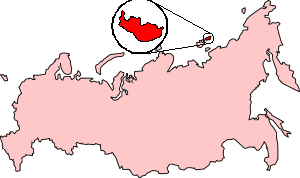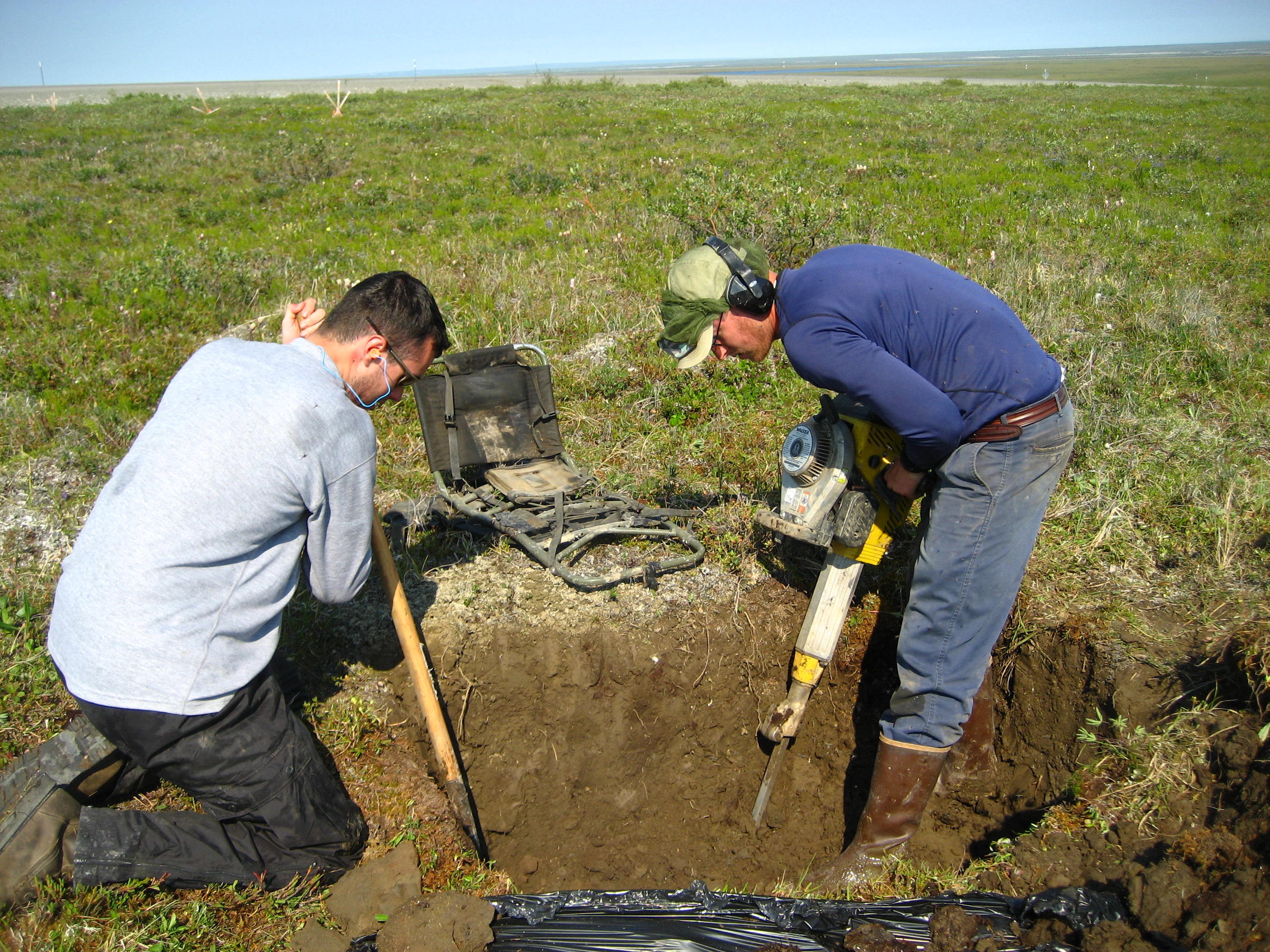|
New Siberian Islands
The New Siberian Islands (; ) are an archipelago in the Extreme North of Russia, to the north of the East Siberian coast between the Laptev Sea and the East Siberian Sea north of the Sakha (Yakutia) Republic, of whose Bulunsky District they are administratively a part. History The first news about the existence of the New Siberian Islands was brought by a Cossack, Yakov Permyakov, in the beginning of the 18th century. In 1712, a Cossack unit led by M. Vagin reached the Great Lyakhovsky Island. In 1809–10 Yakov Sannikov and Matvei Gedenschtrom went to the New Siberian Islands on a cartographic expedition. Sannikov reported the sighting of a "new land" north of Kotelny in 1811. This became the myth of ''Zemlya Sannikova'' or '' Sannikov Land''.Markham, Albert Hastings ''Arctic Exploration'', 1895 In 1886, Russian polar explorer and scientist Eduard Toll, during his first visit to the New Siberian Islands, thought that he had seen an unknown land north of Kotelny Island. H ... [...More Info...] [...Related Items...] OR: [Wikipedia] [Google] [Baidu] |
Laptev Sea
The Laptev Sea () is a marginal sea of the Arctic Ocean. It is located between the northern coast of Siberia, the Taimyr Peninsula, Severnaya Zemlya, and the New Siberian Islands. Its northern boundary passes from the Arctic Cape to a point with co-ordinates of 79th parallel north, 79°N and 139th meridian east, 139°E, and ends at the Anisiy Cape. The Kara Sea lies to the west, the East Siberian Sea to the east. The sea is named after Russian explorers Dmitry Laptev and Khariton Laptev; formerly, it had been known under various names, the last being Nordenskiöld Sea (), after explorer Adolf Erik Nordenskiöld. The sea has a severe climate with temperatures below 0 °C (32 °F) for more than nine months per year; low water salinity; scarcity of flora, fauna, and human population; and shallow depths (mostly less than 50 meters). It is frozen most of the time, though generally clear in August and September. The sea shores were inhabited for thousands of years by indigeno ... [...More Info...] [...Related Items...] OR: [Wikipedia] [Google] [Baidu] |
Matvei Gedenschtrom
Mathias or Matthias Hedenström ( Swedish; 1780 – ), also known by his Russian name Matvei Matveyevich Gedenshtrom (), was a Russian explorer of Northern Siberia, writer, and public servant. Life Gedenshtrom was born in Riga, then part of the Russian Empire to Mathias Hedenström (1733–1799), a Swedish political refugee from Dalarna. Matvei Gedenshtrom himself was still a Swedish citizen in 1798. Gedenshtrom attended the University of Tartu. He did not finish his studies and left his alma mater in favor of work at Tallinn customs. Until 1806, he worked in Riga as a translator for Count Friedrich von Buxhoeveden, the Governor-General of the Baltic provinces. In 1808, while working as secretary to a customs inspector, he was arrested in connection with a bribery affair, tried, and then banished to Siberia. Later that year, Gedenshtrom arrived in Irkutsk and received his first duty assignment by Minister of Commerce Nikolay Rumyantsev, namely, the exploration of the coastli ... [...More Info...] [...Related Items...] OR: [Wikipedia] [Google] [Baidu] |
Novaya Sibir
New Siberia or Novaya Sibir (; , , ; ) is the easternmost of the Anzhu Islands, the northern subgroup of the New Siberian Islands lying between the Laptev Sea and East Siberian Sea. Its area of approximately places it the 102nd largest islands in the world. New Siberia Island is low lying, rising to only and covered with tundra vegetation. The island is a part of the territory of Russia's Sakha Republic. Geology New Siberia Island consists of clastic sediments ranging from Late Cretaceous to Pleistocene in age. The Late Cretaceous sediments consist of extensively folded layers of gray and greenish gray tuffaceous sand, tuffaceous silt, pebbly sand, and layers of brown coal exposed in sea cliffs along it southwest coast. The sand and silt often contain either volcanic glass, fossil plants, rhyolite pebbles, or some combination of them. Eocene sand, silt, clay, and brown coal overlies an erosional unconformity cut into the Late Cretaceous sediments. Within the northwest part ... [...More Info...] [...Related Items...] OR: [Wikipedia] [Google] [Baidu] |
Bunge Land
Bunge Land or Zemlya Bunge is a huge, empty, and almost barren intermediate zone in the Anzhu Islands north of Siberia. It is located between Kotelny and Faddeyevsky, which, unlike Bunge Land, could be described as proper islands. Sandy and flat, its area is 6,200 km2. Since most of its surface rises only to a maximum height of 8 m above sea level, Bunge Land is flooded during storm surges, except for a very small area in the southeast that rises to an elevation of 11 to 21 m above sea level. The area that is periodically submerged accounts for over 80% of the total surface and is practically devoid of vegetation. Bunge Land is named after Russian zoologist and explorer Alexander Alexandrovich Bunge. |
Faddeyevsky Island
Kotelny Island (; ) is part of the Anzhu Islands subgroup of the New Siberian Islands located between the Laptev Sea and the East Siberian Sea in the Russian Arctic. It is administratively and municipally part of Bulunsky District of the Republic of Sakha (Yakutia). Kotelny, Faddeyevsky and Bunge Land are usually named as separate islands on most 20th century maps, although sometimes on the newest maps the name "Kotelny" is applied to the whole island. A flat, low-lying, plain connecting both is known as Bunge Land (). The total area of Kotelny Island is 23,165 km2.Great Soviet Encyclopedia Kotelny is one of the 50 largest islands in the world. History The island was officially discovered by a Russian merchant and hunter, Ivan Lyakhov, with the merchant Protod’yakonov, in 1773. In 1770, Ivan Lyakhov noticed reindeer tracks heading seaward across the sea ice. In 1773, he and Protod’yakonov discovered the Lyakhovsky Islands by boat using the bearing of these tracks. ... [...More Info...] [...Related Items...] OR: [Wikipedia] [Google] [Baidu] |
Sakha Language
Sakha may refer to: * Sakha Republic, a federal subject of Russia * Sakha language, or Yakut, a Turkic language * Sakha people, also Yakuts, a Turkic people * Sakha scripts, writing systems for the Sakha language * Sakha, Egypt, a town also known as Xois * Sakha, Iran, a village in Zanjan Province, Iran * Sakha Consulting Wings, a taxi service provided by women for women in Delhi, India See also * Saha (other) * Saka (other) * Sakhi (other) * Sakhavu (other) {{Disambiguation, geo ... [...More Info...] [...Related Items...] OR: [Wikipedia] [Google] [Baidu] |
Anzhu Islands
The Anzhu Islands or Anjou Islands (; ) are an archipelago and geographical subgroup of the New Siberian Islands archipelago. They are located between the Laptev Sea and the East Siberian Sea in the Arctic Ocean. Etymology The Anzhu Islands are named after Russian explorer Piotr Fyodorovich Anjou, Pyotr Anjou, a Russian-born descendant of Protestant refugees from the French province of Duchy of Anjou, Anjou. Geography The total area of the islands is approx. 29,000 km2. This island group is a practically uninhabited territory. It belongs administratively to Sakha Republic, Yakutia, Russian Federation. Main islands The main islands of the Anzhu Islands archipelago are, from west to east: *Belkovsky Island. *Kotelny Island **Bunge Land **Faddeyevsky Peninsula *New Siberia References Location of the Anzhu Islands External links * {{East Siberian Sea Islands Anzhu Islands, Archipelagoes of the East Siberian Sea Archipelagoes of the Laptev Sea New Siberian Islands Arc ... [...More Info...] [...Related Items...] OR: [Wikipedia] [Google] [Baidu] |
Daily Telegraph
''The Daily Telegraph'', known online and elsewhere as ''The Telegraph'', is a British daily broadsheet conservative newspaper published in London by Telegraph Media Group and distributed in the United Kingdom and internationally. It was founded by Arthur B. Sleigh in 1855 as ''The Daily Telegraph and Courier''. ''The Telegraph'' is considered a newspaper of record in the UK. The paper's motto, "Was, is, and will be", was included in its emblem which was used for over a century starting in 1858. In 2013, ''The Daily Telegraph'' and '' The Sunday Telegraph'', which started in 1961, were merged, although the latter retains its own editor. It is politically conservative and supports the Conservative Party. It was moderately liberal politically before the late 1870s.Dictionary of Nineteenth Century Journalismp 159 ''The Telegraph'' has had a number of news scoops, including the outbreak of World War II by rookie reporter Clare Hollingworth, described as "the scoop of the cent ... [...More Info...] [...Related Items...] OR: [Wikipedia] [Google] [Baidu] |
Soviet Era
The history of the Soviet Union (USSR) (1922–91) began with the ideals of the Russian Bolshevik Revolution and ended in dissolution amidst economic collapse and political disintegration. Established in 1922 following the Russian Civil War, the Soviet Union quickly became a one-party state under the Communist Party. Its early years under Lenin were marked by the implementation of socialist policies and the New Economic Policy (NEP), which allowed for market-oriented reforms. The rise of Joseph Stalin in the late 1920s ushered in an era of intense centralization and totalitarianism. Stalin's rule was characterized by the forced collectivization of agriculture, rapid industrialization, and the Great Purge, which eliminated perceived enemies of the state. The Soviet Union played a crucial role in the Allied victory in World War II, but at a tremendous human cost, with millions of Soviet citizens perishing in the conflict. The Soviet Union emerged as one of the world's two s ... [...More Info...] [...Related Items...] OR: [Wikipedia] [Google] [Baidu] |
Russian Navy
The Russian Navy is the Navy, naval arm of the Russian Armed Forces. It has existed in various forms since 1696. Its present iteration was formed in January 1992 when it succeeded the Navy of the Commonwealth of Independent States (which had itself succeeded the Soviet Navy following the dissolution of the Soviet Union in late December 1991). The Imperial Russian Navy was established by Peter the Great (Peter I) in October 1696. The symbols of the Russian Navy, the St. Andrew's ensign (seen to the right), and most of its traditions were established personally by Peter I. The Russian navy possesses the vast majority of the former Soviet naval forces, and currently comprises the Northern Fleet, the Pacific Fleet (Russia), Pacific Fleet, the Black Sea Fleet, the Baltic Fleet, the Caspian Flotilla, the Permanent task force of the Russian Navy in the Mediterranean Sea, permanent task force in the Mediterranean, Russian Naval Aviation, Naval Aviation, and the Coastal Troop ... [...More Info...] [...Related Items...] OR: [Wikipedia] [Google] [Baidu] |
Permafrost
Permafrost () is soil or underwater sediment which continuously remains below for two years or more; the oldest permafrost has been continuously frozen for around 700,000 years. Whilst the shallowest permafrost has a vertical extent of below a meter (3 ft), the deepest is greater than . Similarly, the area of individual permafrost zones may be limited to narrow mountain summits or extend across vast Arctic regions. The ground beneath glaciers and ice sheets is not usually defined as permafrost, so on land, permafrost is generally located beneath a so-called active layer of soil which freezes and thaws depending on the season. Around 15% of the Northern Hemisphere or 11% of the global surface is underlain by permafrost, covering a total area of around . This includes large areas of Alaska, Canada, Greenland, and Siberia. It is also located in high mountain regions, with the Tibetan Plateau being a prominent example. Only a minority of permafrost exists in the Southern Hemi ... [...More Info...] [...Related Items...] OR: [Wikipedia] [Google] [Baidu] |




